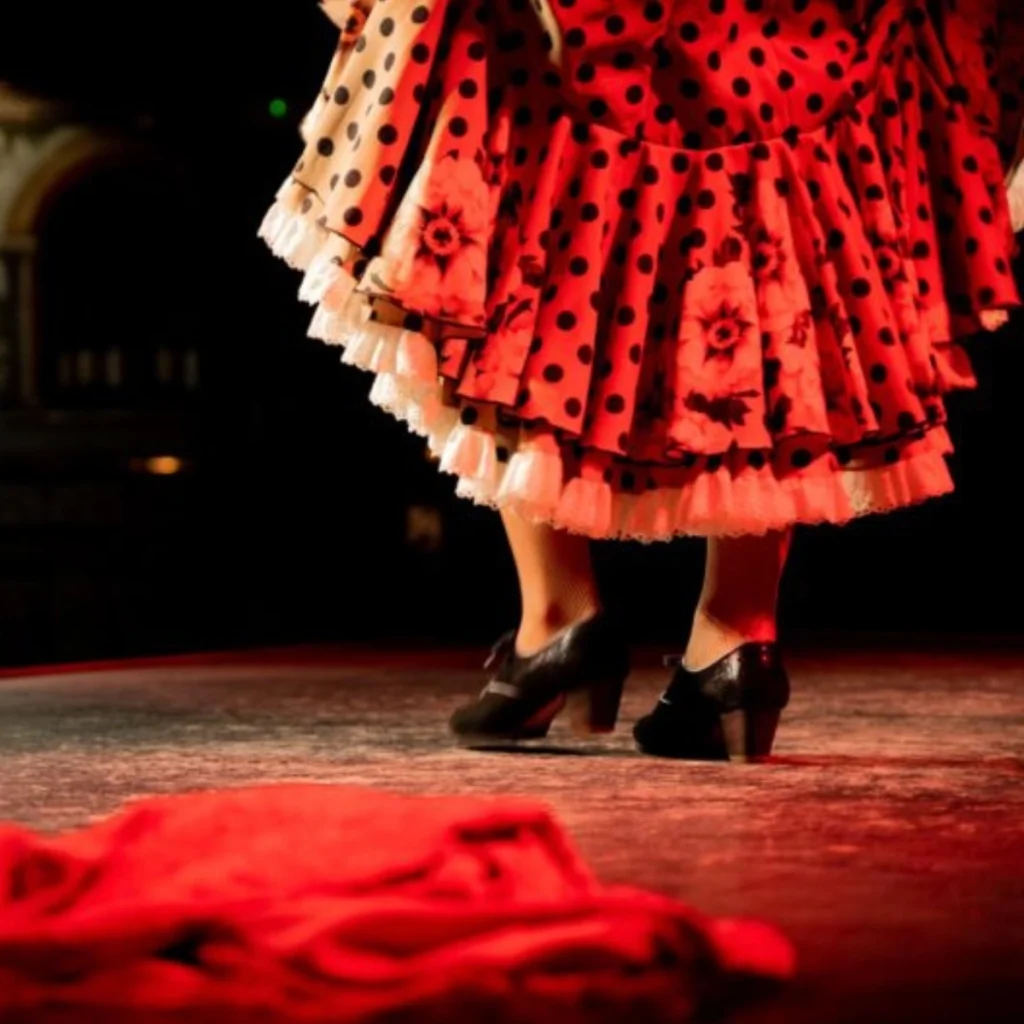We present to you the 7 most representative palos of flamenco, essential for understanding the richness and diversity of this cultural heritage.
Flamenco is one of the artistic expressions with the greatest richness and popularity worldwide.
This discipline was not born overnight. Flamenco was forged over time, and was the result of cultural fusion and the coexistence of diverse peoples and cultures.
That’s why it is considered one of the richest and most passionate cultural identities in the world. Within flamenco, we find a wide range of styles, as this art is expressed in a wide diversity of songs, dances, and instruments.
The different styles of flamenco are called palos of flamenco. Although there may be more than 50 palos of flamenco, there are always some that are the most used and well-known. These are called the 7 palos of flamenco.
Each palo of flamenco has its own rhythm, character, emotion, and mood. Therefore, in this post, we are going to talk about the 7 most representative palos of flamenco that every flamenco lover should know.
What are the Palos of Flamenco?
We can define the palos of flamenco as the different styles or musical forms that are part of the art of flamenco.
Each palo of flamenco has certain characteristics that differentiate it, for example, the compás (rhythm), the emotional tone, the musical structure, or the main theme of the song. There are palos of flamenco that are danceable, more cheerful and festive. In contrast, there are palos that are more emotional and profound.
In total, we can find that flamenco has more than 50 palos, but the best known are the soleá, the bulería, the seguiriya, the tangos, and the alegrías.
For those who love flamenco, it is usually important to know the palos because in this way we can identify the styles well, better understand the deepest part of the music, and better appreciate the cante.
Soleá
Within the best-known palos of flamenco, we find the Soleá. This would be one of the most profound and traditional palos.
The word soleá already gives us several clues about the theme that will prevail in the cantes.
The word soleá comes from “solitude”, and therefore, its lyrics are usually melancholic and it has a slow 12-beat rhythm. The soleá is undoubtedly one of the basic cantes of flamenco, which is why it is the mother of many other palos.
Characteristics:
-
12-beat rhythm
-
Slow tempo
-
Melancholic lyrics that speak of loneliness, pain, or reflections on life.
Alegrías
Another palo whose name gives us many clues about the themes of its lyrics. The alegrías, as its name indicates, are one of the most cheerful palos of flamenco.
Its origin is Cádiz, and they are identified by having a fast but at the same time elegant rhythm, they are designed to invite you to dance them. Although it shares the same rhythm as the soleá, it has a more diverse character: celebratory, vital, and full of grace.
Characteristics:
-
12-beat rhythm
-
Lively tempo
-
Themes related to nature, love, and celebration
Bulerías
The bulería is one of the palos most used to celebrate and let the artist’s creativity fly. However, it is quite complex to interpret due to its free rhythm and speed.
The bulería is perfect for closing a performance in a more energetic way, although it requires mastery of the rhythm and a lot of art.
Characteristics:
-
12-beat rhythm with unique accents
-
Very fast and dynamic
-
Great prominence of rhythm and improvisation
Tientos
The tientos are solemn and slow palos, full of emotion and expressive force. Its rhythm is the same as that of the flamenco tango, but at a much slower tempo. They are ideal for transmitting intense and painful feelings, and are often combined with tangos.
Characteristics:
-
4-beat rhythm
-
Slow tempo
-
Meaningful and expressive cante
Tangos
The flamenco tangos are one of the most popular and accessible styles of flamenco. Its marked and cheerful rhythm makes them ideal for dancing. There are many variants depending on the region: tangos from Granada, Cádiz, Triana, among others.
Characteristics:
-
4-beat rhythm
-
Danceable and catchy rhythm
-
Carefree and festive lyrics
Seguiriyas
The seguiriyas is one of the oldest and deepest palos of flamenco. It represents lament, pain, and tragedy, and requires great expressiveness on the part of the cantaor. Its rhythmic structure is complex, with a rhythm that clearly marks the intensity of the cante.
Characteristics:
-
12-beat rhythm with very marked accents
-
Slow tempo
-
Lyrics that address death, loss, and suffering
Fandangos
The fandango is a very versatile palo that has given rise to other flamenco styles such as malagueñas or verdiales. It is characterized by starting with a free cante (without a marked rhythm) and, in many cases, then entering into rhythm. There are multiple regional variants, such as the fandangos of Huelva.
Characteristics:
-
Free start and end with rhythm
-
Great melodic richness
-
Varied themes, from love to everyday life
Knowing the different flamenco palos is essential to understanding the richness of this art. Each one represents an emotion, a cultural context, and a particular way of feeling. Whether you are a fan, student, or professional of flamenco, familiarizing yourself with its palos will allow you to appreciate much more the depth of each cante, toque, or baile.
Flamenco is not just music, it is emotion, it is history, and it is identity. These 7 palos of flamenco are a gateway to the world of cante jondo. Explore each one, listen to its nuances, and let yourself be carried away by the passion that only flamenco knows how to transmit.

